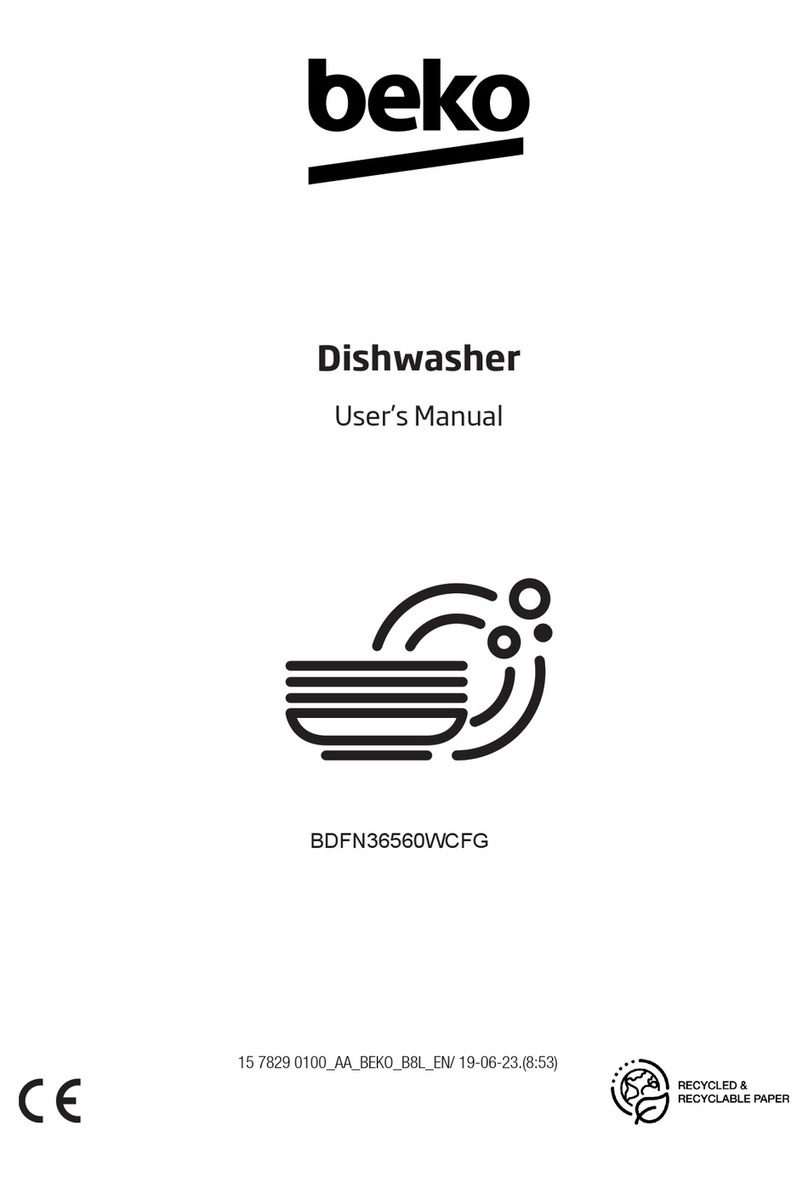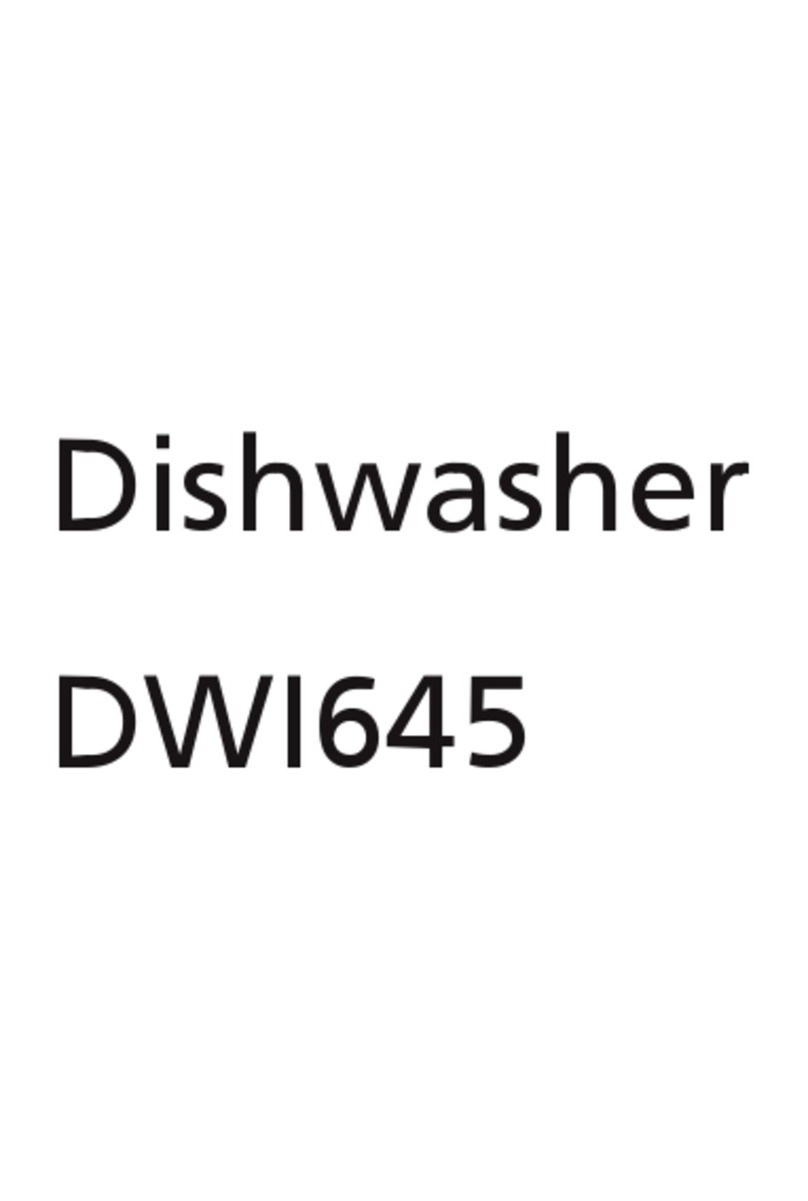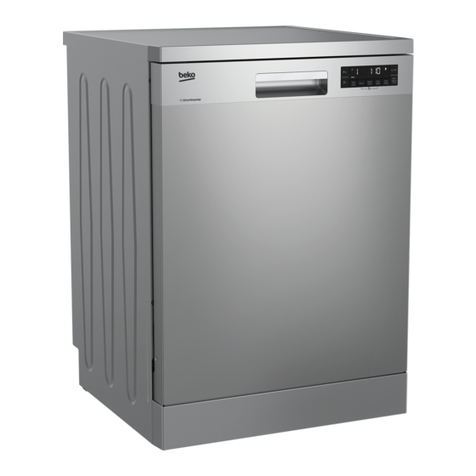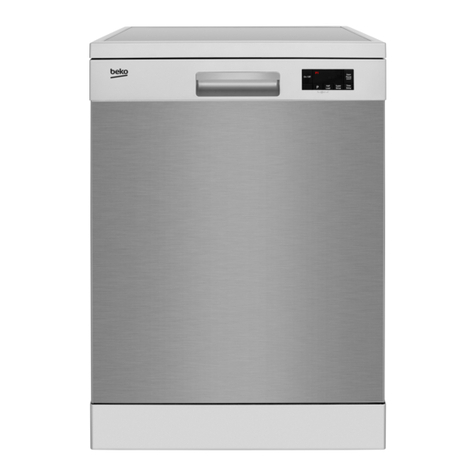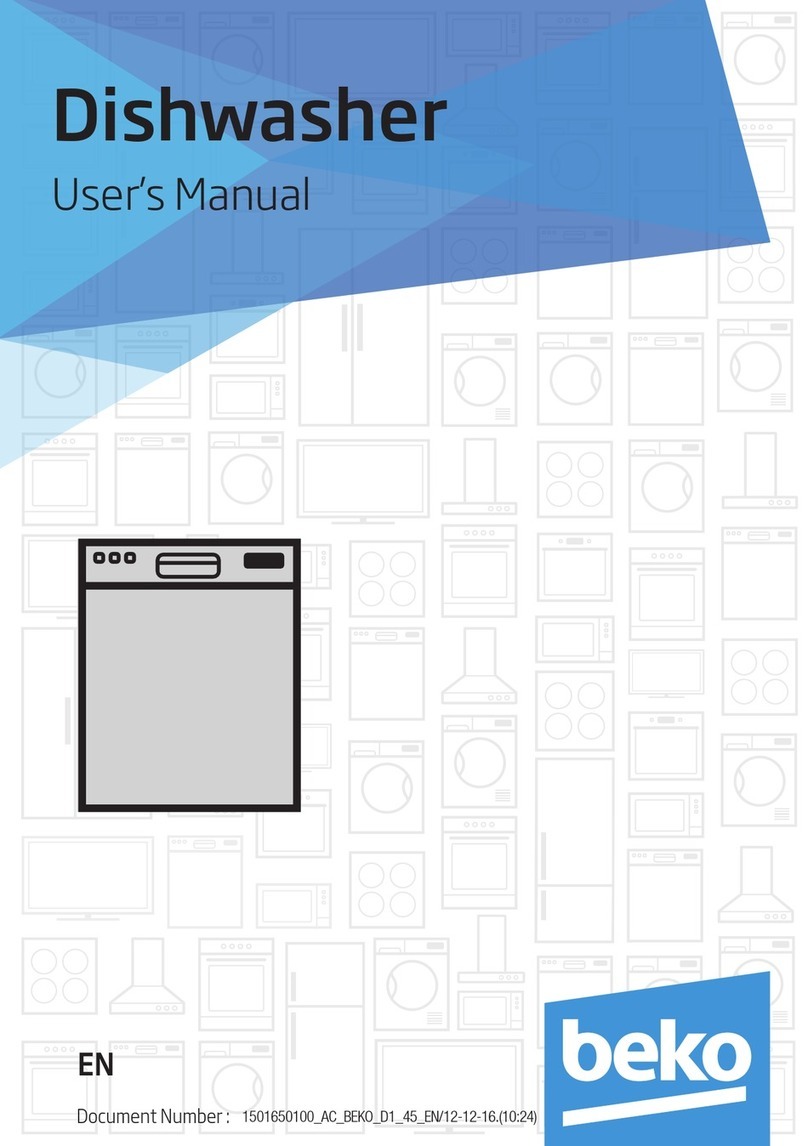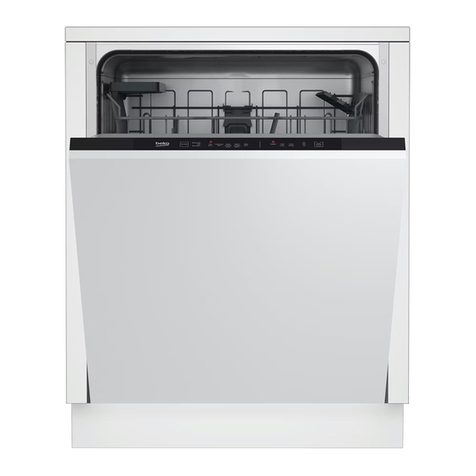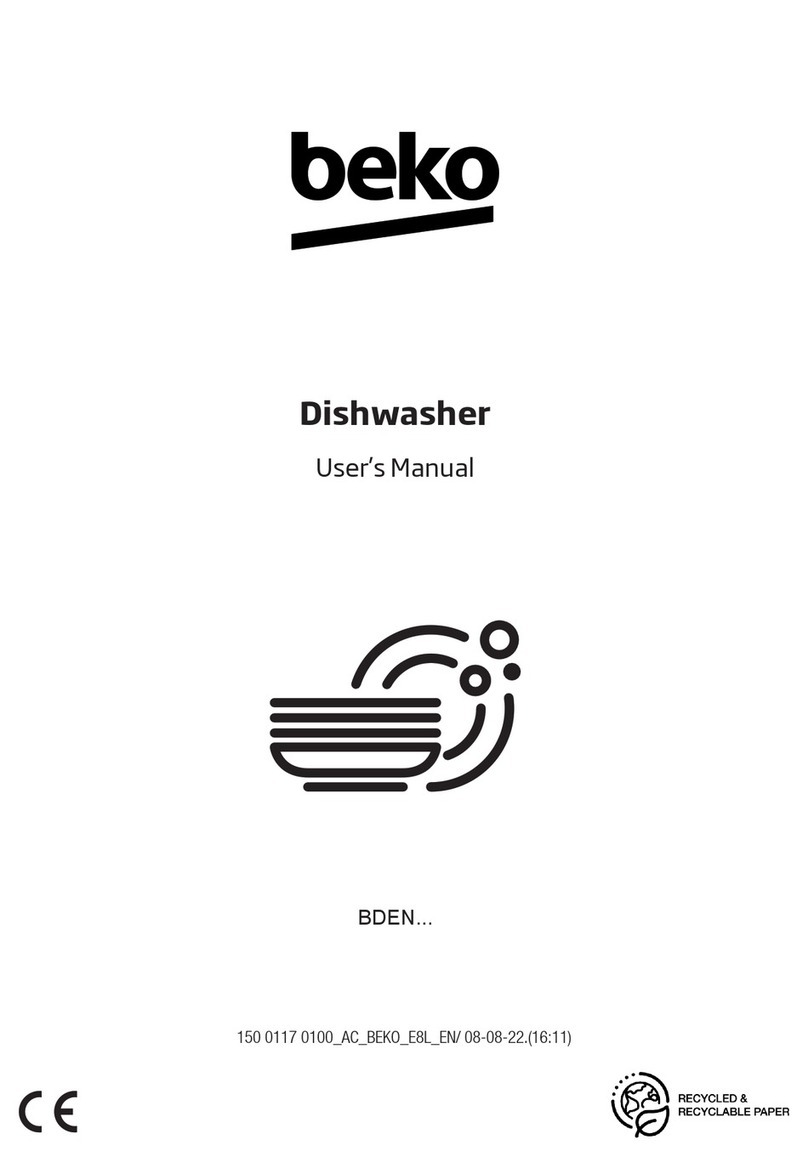
13/EN
Installation
Read “Safety Instructions” section first!
Installation procedures must always be
performed by the manufacturer, authorised
service agent or a qualified person
specified by the importer. To make the
product ready for use, make sure that
the electricity, tap water supply and water
drainage systems are appropriate before
calling the authorised service agent. If
they are not, call a qualified technician
and plumber to have the necessary
arrangements carried out.
Preparation of the location and
electrical, tap water and waste water
installations at the place of installation
is under customer's responsibility.
Installation and electrical connections
must be carried out by the authorised
service agent. Manufacturer shall
not be held responsible for damages
arising from processes carried out by
unauthorised persons.
Prior to installation, check if the product
has any defects on it. If the product
is damaged, do not have it installed.
Damaged products cause risks for your
safety.
Make sure that the water inlet and
discharge hoses are not folded,
pinched or crushed while pushing the
product into its place after installation
or cleaning procedures.
The front of the appliance may not be
removed on free-standing or under-the-
counter models. The warranty will be
void if this is done.
When placing the product, pay attention not
to damage the floor, walls, piping, etc. Do
not hold the product from its door or panel
to move it.
Appropriate installation location
In the area where this product is
installed, there must not be a lockable,
sliding or hinged door that will restrict
full opening of the product’s door.
Make sure that you select a location
that will allow you to load and unload
the dishes in a fast and comfortable
manner.
•Place the product on a solid and flat
floor that has sufficient load carrying
capacity! The product must be installed
on a flat surface in order for the door to
be closed properly and securely.
•Do not install the product at places
where temperature may fall below 0ºC.
•Place the product on a hard floor. Do
not place it on a long pile rug or similar
surfaces.
Do not place the product on the power
cable.
•Make sure that you select a location
that will allow you to load and unload
the dishes in a fast and comfortable
manner.
•Install the product at a place close to
the tap and the drain hole. Select the
installation location by considering
that it will not be changed after the
connections are made.
Connecting water supply
We recommend installing a filter at
the water inlet in order to prevent the
dirt (sand, clay, rust) in the mains or
water installation of your home from
damaging the machine or the dishes.
4-


